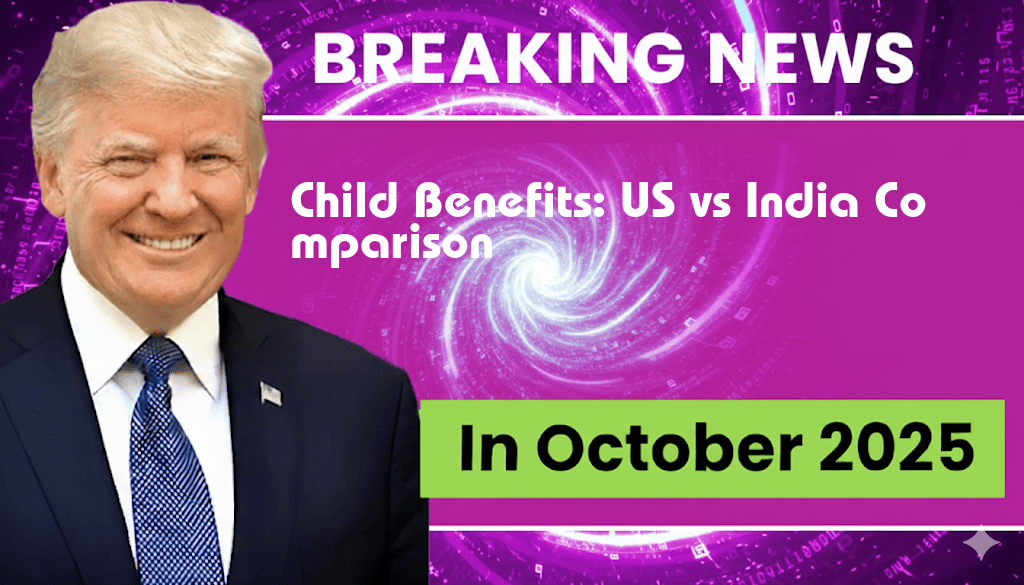Understanding Child Benefits: A Comparative Analysis of the U.S. and India
The ongoing debate over child benefits has gained momentum as families in both the United States and India navigate rising costs of living. In the U.S., a child tax credit of approximately $2,200 is available for eligible families, aimed at easing financial burdens. Meanwhile, India offers a significantly higher benefit, with the government providing up to ₹1,65,000 (about $2,000) per child annually through various schemes. This article explores the key differences and implications of these child benefits, highlighting eligibility criteria, financial impact, and broader socio-economic contexts.
Child Benefits in the United States
The United States has employed a child tax credit system designed to assist families in managing the costs associated with raising children. In 2021, the American Rescue Plan temporarily increased the child tax credit to $3,600 for children under 6 and $3,000 for those aged 6 to 17. However, the standard credit reverted to $2,200 in subsequent years.
Eligibility Criteria
- Families must have a qualifying child under the age of 17.
- Income thresholds apply, with credits phased out for higher earners.
- Dependent children must be U.S. citizens, national, or resident aliens.
Financial Impact
For many families, the child tax credit serves as a crucial financial cushion. According to the IRS, this credit can significantly reduce the tax burden, thus allowing families to allocate more resources toward essentials such as education and healthcare.
Child Benefits in India
In India, the approach to child benefits encompasses a range of initiatives aimed at improving child welfare and reducing poverty. The government allocates funds through various schemes, including the Integrated Child Development Services (ICDS) program, with an annual benefit that can reach ₹1,65,000 for eligible families.
Eligibility Criteria
- Benefits are generally available for families with children aged 0 to 6 years.
- Eligibility often depends on socio-economic status, with lower-income families prioritized.
- Children must be Indian citizens to qualify for government assistance.
Financial Impact
The financial assistance provided through these programs is designed to combat malnutrition, improve health, and support educational opportunities. A report by the World Health Organization emphasizes the importance of such benefits in promoting child health and development.
Comparative Overview
| Aspect | United States | India |
|---|---|---|
| Annual Benefit Amount | $2,200 | ₹1,65,000 (~$2,000) |
| Age Limit for Benefits | Up to 17 years | 0 to 6 years |
| Income Limit | Phased out for higher earners | Low-income families prioritized |
| Primary Focus | Tax reduction | Child welfare and nutrition |
Conclusion
The comparison of child benefits in the U.S. and India reveals significant differences in structure and impact. While the U.S. focuses on tax credits as an incentive for families, India emphasizes comprehensive welfare initiatives aimed at addressing child health and development needs. As both countries continue to grapple with economic challenges, the effectiveness of these programs will play a crucial role in shaping the future of their children.
Frequently Asked Questions
What is the amount of child benefits offered in the U.S.?
The child benefit in the U.S. is a $2,200 credit per child, aimed at providing financial support to families.
How does the child benefit in India compare to that in the U.S.?
In India, the child benefit amounts to ₹1,65,000 per child, which is significantly higher than the U.S. credit when converted to a similar currency value.
Are the child benefits in the U.S. and India taxable?
In the U.S., the $2,200 child credit is generally non-taxable, whereas in India, the ₹1,65,000 benefit may have different tax implications depending on the recipient’s overall income.
What are the eligibility criteria for receiving child benefits in these countries?
Eligibility for the $2,200 credit in the U.S. typically depends on income and the number of dependent children, while in India, the ₹1,65,000 benefit can vary based on government schemes and family income levels.
How can families apply for these child benefits?
In the U.S., families can apply for the $2,200 child credit through their tax returns, while in India, families may need to apply through specific government programs or initiatives to receive the ₹1,65,000 benefit.
